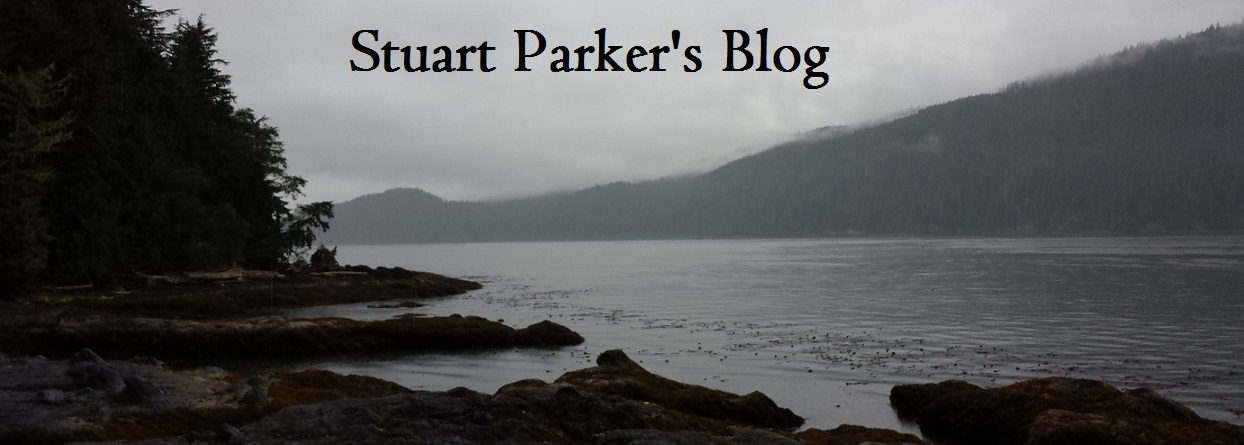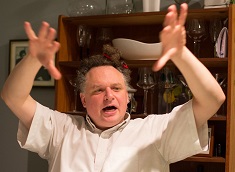Tuesday Nights with George and Sarah Michelle Gellar
Tomorrow, I get to work on a long-delayed project, nearly a decade delayed, in fact, organizing a symposium in honour of my late friend George Gibault, twentieth-century conservative political strategist, courtier and public intellectual. For the event, I am going to be producing a series of papers about the different sides of George, the different aspects of this great man’s thinking.
While many disturbing recent events in provincial, national and international politics have made me think of George and his intellectual contributions, I feel that the atmosphere around me, the panic, the fragility, the vigilance demand that I start in a particular part of the Gibault oeuvre: speculative fiction. So, yes, this is going to be one of those blog posts where I post some massively out-of-date reviews of some cool, geeky shows from back in the day.
In 1998, I moved to Victoria, motivated, in part, by a major social faux pas that had made my native Vancouver a more awkward place to live. But I was also motivated by the fact that I had secured funding to work full-time, as BC Green Party leader, admittedly for a pittance. If I wanted to be seen as a legislator in waiting, I should move to be close to the legislature and take up residence in one of the four ridings that presented an outside chance of electing a Green.
My social circle in Victoria was small and, as my leadership of the party headed into complete crisis, it did not grow at the customary rate I experience when I move to a community. Instead, the linchpin of my week and of my social world was visiting George on Tuesday evenings to watch Buffy the Vampire Slayer.
Buffy was an important show back in the day but one that is not appreciated precisely because of how novel and innovative it was. The 1990s introduced one new major cinematic genre, the horror-comedy, exemplified not just in the Joss Whedon corpus but the Kevin Williamson Scream series. Horror-comedy was not just about the deft and clever ways that Williamson, Whedon and their ilk could use humour to release tension without destroying the ability of their films and shows to produce genuine horror and dread one moment, and a genuine belly laugh the next.
Horror-comedy also featured highly self-conscious, fourth wall-adjacent dialogue in which the characters do not recognize that they are fictional but do take active, ironic notice of the tropes and literary constructs that seem to rule their lives. The central characters, who are often supposedly adolescents, then, develop a strange speaking style in which they sound more educated, more sophisticated and more emotionally disengaged than the characters they play. This was not unique to horror-comedy but diffused out into TV and movies through overlapping stables of writers and audience expectations. In fact, Williamson’s prime time teen soap, Dawson’s Creek, despite being outside the genre, best exemplifies this dialogue style.
While the dialogue was thoroughly beguiling to us back in the day, today when one watches Buffy or Dawson, the dialogue sounds stilted, awkward. That is not because this kind of dialogue has been abandoned—far from it—it’s that we have got better at it with practice. Learning the smooth execution of this dialogue style was something still in the future when Buffy was first experimenting with this new way of ventriloquizing twentysomethings dressed as teenagers.
This dialogue style was just one of the major shifts in entertainment that Buffy unleashed. While the Six Million Dollar Woman, Wonder Woman and the old Batman TV franchise had introduced us to supernaturally strong women, the idea that tiny, anorexic women like Sarah Michelle Gellar could be highly sexualized action stars by having bodies that made no aesthetic concession to physical characteristics that make human bodies strong. In fact, Gellar’s first stunt double denounced the show, quitting over the way the star’s eating disorder was helping to send girls all the wrong messages about the human body. By using special effects, stunt doubles and importing Hong Kong wire fu filming techniques from Michelle Yeoh movies, America’s tiny, frail anorexic superheroines were born.
At the time, we had no idea that this was the second station on the train from lower strength standards for female fire fighters in the 80s to the pathological sex denialism of the 2020s, in which we pretend that we can put a man in a boxing ring with a woman and expect a fair and equal fight.
Place and Metaphor in the Pacific Northwest
But George and I were not focused on any of that. Our epiphany concerning the show was not about the implausibly yet entertainingly-talking characters or the equally implausible yet absolutely real young female bodies that kept our eyes focused on the screen. We felt we recognized something in Buffy from our shared love of the rural Pacific Northwest.
For those who did not spend the second half of the 90s glued to Buffy, let me sketch the basics of the show. Buffyand her high school friends attend Sunnyvale High School, the only high school in the medium-sized California town of Sunnyvale. Sunnyvale has the distinction of containing the “Hellmouth,” the literal gates of hell, which causes a clustering of demonic supernatural phenomena around the town. Each episode centres on a monster or other demonic force related to the Hellmouth set on endangering and threatening the town and transforming or eliminating its residents and being opposed by Buffy and her trusty band of classmate sidekicks.
Each episode typically features witty yet fundamentally unreal banter among the characters, often adjacent to the fourth wall; each also typically features cool wire-fu-style fight scenes between the diminutive 5’2” Buffy and enormous, powerful monsters or teams thereof. Each season of the show is structured around a major villain who has come to Sunnyvale to open the Hellmouth in service of some dastardly world-ending plan they spend the season putting into place.
While Buffy’s fellow students and Sunnyvale’s townspeople are always glad of Buffy and her friends’ Herculean efforts to save them and their town, their work is never acknowledged and is only spoken-of in hushed tones. Furthermore, whenever there is a major supernatural disaster in public view or an attack by a whole army of monsters, police and city officials work to cover it up, issuing perfunctory and unbelievable denials, usually blaming meth.
The reason for this is explained, to some extent, when it is revealed that the archvillain of season three, the town’s mayor, is actually a demon seeking to transform into his full monstrous arachnid form when he opens the Hellmouth, during his “ascension.”
But as the mayor is defeated, the US government moves in to begin conducting experiments on the local human and vampire populations. And it was at this point that George (mostly George) and I put together what Buffy is really about. It is about living in a single-industry town. The Hellmouth is like a large coal or uranium deposit; it kills and sickens a portion of the townspeople, an open secret that nobody can talk about. They cannot talk about it because the Hellmouth/mine/mill/smelter attracts all the outside investment to the town. Nobody would invest in the town; there would be not jobs if it did not contain the gates of hell.
And so, the politics of Sunnyvale are the politics of a town like Mackenzie, Trail or Kitimat. Lead poisoning and cancer stalk the streets, producing sickness, madness, and the jobs and investment, without which the town would dry up and blow away.
And then it hit me: Sunnyvale is, in a way, a specific town: Hanford, Washington, home to America’s most Chernobyl-like nuclear reactor. People from surrounding towns, but not Hanford itself, speak of the Hanford Necklace, a neck scar of about the size and angle of vampire bites on Buffy, from lymph cancer surgeries, which are exceedingly common for those who live near or work at the Hanford Reactor.
To this day, I have no idea how self-conscious the show was in exploring this theme or whether the structural premise of the show would inevitably describe the society of a single-industry mill town. But that was the thing about thinking aloud with George: the point was to find the predictive pattern. Such patterns were inevitably bigger than authorial intention or conscious conspiracies and schemes.
George applied the same logic, along with some possible hints in the script to David Lynch’s Twin Peaks, the comedy-horror-surrealist prime time soap opera of the early 1990s. The town of Twin Peaks, which seemed to be concurrently located on some hybrid of Koocanusa Reservoir and Lake Champlain, was supposedly in the Interior Wet Belt of Washington State, mysteriously abutting an oddly Francophone region of British Columbia, which hosted a casino/brothel called One-Eyed Jacks that one could reach primarily by crossing an unnamed transboundary lake under cover of darkness.
Twin Peaks, the town, was full of oddities, an elderly bellhop and parttime giant, an extradimensional dwarf, an oracular woman with a telepathic log, portals into another dimension, known as the Black Lodge, a serial killer demon named Bob who gets around by transforming into an owl, etc. Agent Cooper of the FBI, one of the original late 80s metaphysical detectives along with Dirk Gently and the unnamed investigators of Paul Auster’s New York Trilogy, who uses investigative methods he has learned in a dream from the spirit of a Tibetan lama.
Twin Peaks juxtaposes all of this strangeness with images and affirmations of the simple greatness of small town America, with its wholesome diner food, donuts, drip coffee and pie. While some characters are crooks and literal demons, most Twin Peaks residents are the salt of the earth, just a tad quirky, like Big Ed Hurley’s (proprietor of Big Ed’s Gas Farm) wife who has an eye patch, superhuman strength and an obsession with silent drape runners.
All this under the old growth conifers swaying and buckling in the wind and rain, under a permanently grey sky.
George was the one to notice that there are two real world locations the show informs us are near Twin Peaks. The dialogue even tells us the approximate distance to Grand Forks, BC, if not Spokane, WA. And there is a single inescapable conclusion George felt one must reach about Twin Peaks. The original series is actually a documentary on Nelson, BC and the area surrounding it. When people would question him about this and suggest that there are no giants, dwarves or Log Ladies in Nelson, George would typically reply, “Well, obviously you’ve never spent a significant amount of time in the West Kootenays.”

